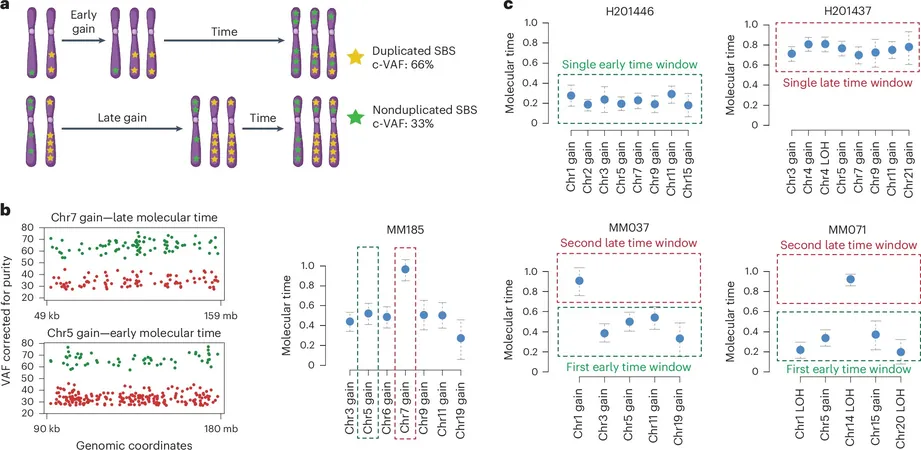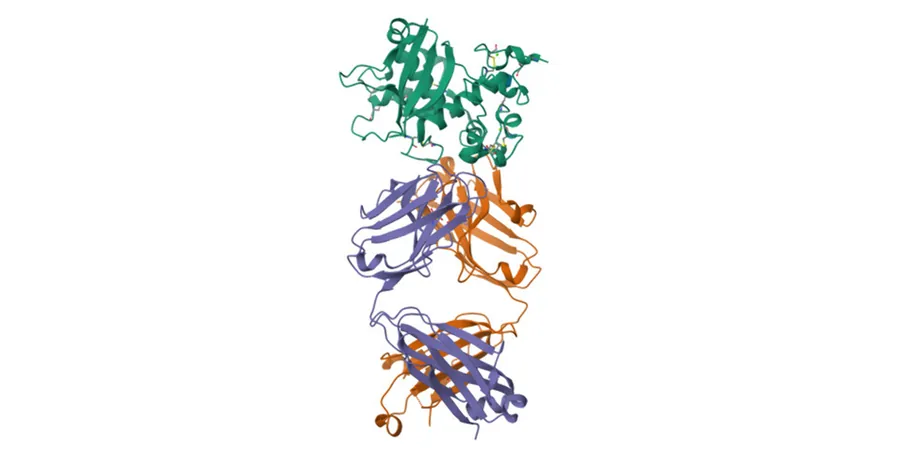
Breakthrough Study Reveals Timeline of DNA Damage in Multiple Myeloma
2025-08-21
Author: Nur
Discovering the Secrets of Multiple Myeloma
A groundbreaking study is reshaping our understanding of multiple myeloma, the second most common blood cancer, opening doors to improved patient stratification and tailored treatment strategies. The research aims to enhance precision medicine by classifying patients based on DNA alterations, ultimately aiming to optimize clinical outcomes.
Unveiling the DNA Damage Timeline
Published in the prestigious journal Nature Genetics, this research corroborates previous findings that indicate the seeds of multiple myeloma can be sown a staggering four decades before diagnosis. Early detection of these genetic changes could revolutionize how we approach treatment.
A Collaborative Effort Across Institutions
Conducted by an esteemed team from multiple institutions—including the Sylvester Comprehensive Cancer Center and Memorial Sloan Kettering Cancer Center (MSKCC)—this study combines expertise in computational biology and genomic sequencing. Co-first author Dr. Marcella Kaddoura highlighted the significance of extracting historical data from a massive dataset of 421 whole-genome sequencing profiles from 382 patients.
How the Molecular Time Model Works
The team employed an innovative approach known as the 'molecular time model,' which acts like an internal clock within the genome. As cancer develops, DNA encounters various mutations at a steady rate. This model helps pinpoint when these changes occur, offering crucial insights into the disease's progression.
Identifying Key Genetic Events
Throughout the study, researchers identified several pivotal genomic events that propel the progression of multiple myeloma. These include hyperdiploidy—where cells possess extra chromosomes—and specific translocations that link genetic material to cancer-promoting genes. Understanding these events not only elucidates the progression from asymptomatic stages to full-blown disease but also provides new prognostic indicators.
Major Findings and Clinical Implications
One of the most striking findings was that the IGH translocation event often precedes hyperdiploidy in patients. Additionally, those who experienced a specific genetic change early in their disease had poorer outcomes, underscoring the potential for using timing of genetic alterations as predictive markers.
Looking Ahead: Future Research Directions
This pioneering study opens up numerous avenues for further investigation. Researchers are now asking critical questions: Can the DNA damage timeline unveil new prognostic indicators? How do these early events impact later stages, and what role do they play in treatment resistance?
Harnessing the Power of Timing in Cancer Treatment
As the research community begins to harness the power of timing regarding genetic events in multiple myeloma, the hope is to refine treatment approaches and improve patient outcomes. Dr. Kaddoura emphasizes that it's not just about the tumor itself; understanding the history of how and when it developed is vital for future therapies.



 Brasil (PT)
Brasil (PT)
 Canada (EN)
Canada (EN)
 Chile (ES)
Chile (ES)
 Česko (CS)
Česko (CS)
 대한민국 (KO)
대한민국 (KO)
 España (ES)
España (ES)
 France (FR)
France (FR)
 Hong Kong (EN)
Hong Kong (EN)
 Italia (IT)
Italia (IT)
 日本 (JA)
日本 (JA)
 Magyarország (HU)
Magyarország (HU)
 Norge (NO)
Norge (NO)
 Polska (PL)
Polska (PL)
 Schweiz (DE)
Schweiz (DE)
 Singapore (EN)
Singapore (EN)
 Sverige (SV)
Sverige (SV)
 Suomi (FI)
Suomi (FI)
 Türkiye (TR)
Türkiye (TR)
 الإمارات العربية المتحدة (AR)
الإمارات العربية المتحدة (AR)